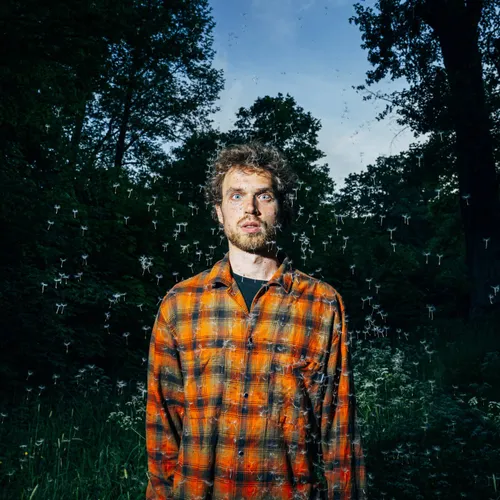
Bastien DAVID is a composer passionate about the diversity of the living world. Through his music, he explores the forms of sound life. The sensitive relationships that sounds weave between them, as well as their ability to move in time and space, constitute the foundations of his inspiration.
He studied composition in the classes of Bernard Cavanna and José Manuel Lopez Lopez at the Gennevilliers conservatory then in the class of Gérard Pesson at the CNSMDP.
Resident at the Villa Médicis and winner of the Hervé Dugardin Prize, he was the resident artist of “Ensemble 2e2m” for the 2022-2023 season.
He will also be a resident of Casa de Velazquez in 2024.
His music, published by Éditions Henry Lemoine, is frequently performed internationally, such as recently at the Monte-Carlo Spring Arts Festival, during the creation of L'ombre d'un doubt, his concerto for two cellos and orchestra stringed.
The composition of Phaidra for the actress Fanny Ardant and of Bec et Ongles for the violinist Renaud Capuçon were particularly striking due to the intense experience aroused by the exchanges with these two artists.
Invited by the Bavarian Ministry of Sciences and Arts, Bastien DAVID has composed, at Villa Concordia, the continuation of a major cycle started in 2020 with Urban song.
Second movement of the cycle, Chlorophyll Synthesis is the first work to have been composed for the 216 notes of the Métallophone, a microtonal percussion instrument invented by the composer.
Commissioned for the opening of the Festival Présences 2023, it will combine, under the direction of Tito Ceccherini, the soloists of the EIC, the mastery of Radio France and the company Les Insects, which is dedicated to Métallophone
Chlorophyll Synthesis was created on February 7, 2023, at the Radio France auditorium.
Les Six chansons laissées sans voix were composed at the Villa Médicis - Académie de France in Rome. The imagery of the piece comes from its gardens, and more precisely from the bosco, a part named "the little wood" left deliberately wild. A significant density of plants can be found there, including a proliferation of holm oaks and acanthus, a plant whose foliage and blooms are particularly gigantic. Walking around there on summer nights, you may find at the turn of the path some rare wandering fireflies. From these nocturnal walks the idea was born of giving voice to the possible creatures which populate this garden, historical as much as fabulous.
Les Six chansons laissées sans voix is a piece which pays full attention to creating vocal sounds and that only by instrumental play. I wanted the grunts, squeaks, rumblings, roars, mutterings, snores, screams and mutterings to be heard through the misuse of musical instruments or any other unusual objects. The stirring-xylophone is one of them. For that I decided to use the friction of the hairs of a bow against the instrument's wood to produce a tone close to that of a voice, as strange as it is sensitive. Interdependent like medley, these tonal melodies address various aspects of instrumental vocality. The nine musicians then constitute a chorus of mysterious creatures singing six imaginary songs at the top of their voices.